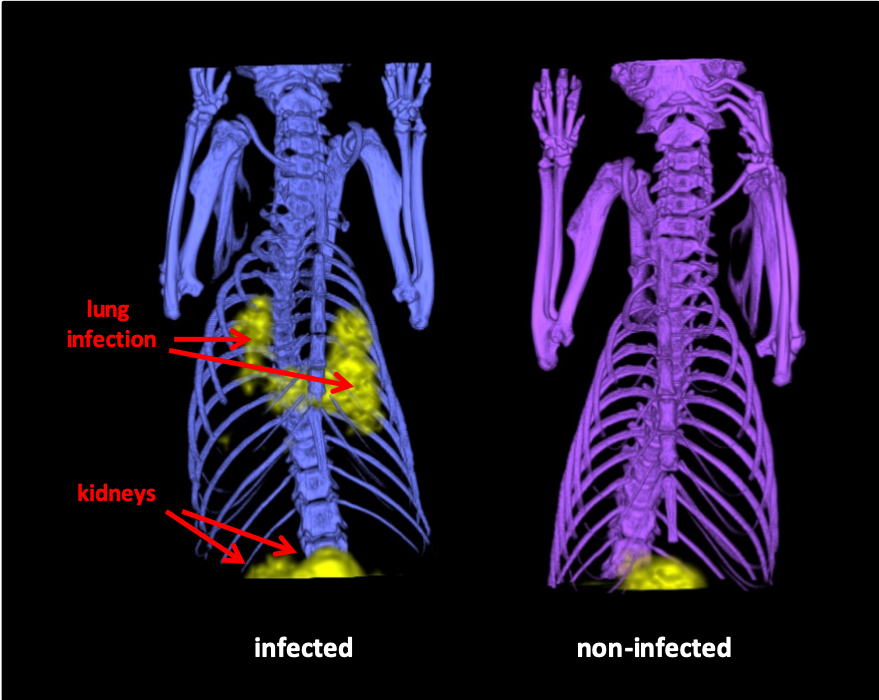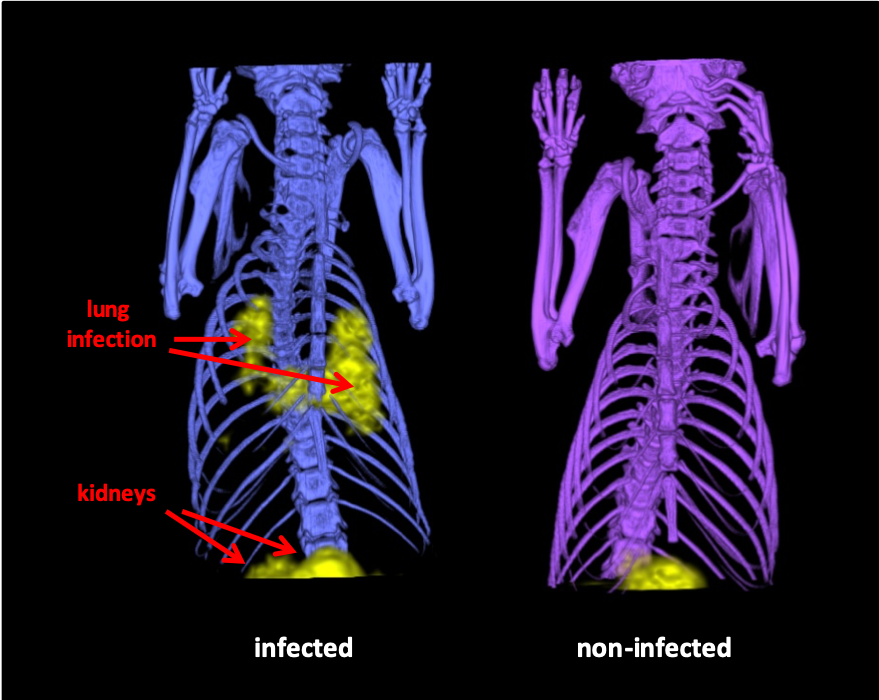Radiolabelled siderophores for infection imaging
INTRODUCTION:
Invasive fungal and bacterial infections are major causes of morbidity and mortality in immunocompromised patients. In recent years, a dramatic increase in the incidence of infections caused by opportunistic pathogens has been observed. Early diagnosis of infection and capacity to distinguish between microbial and sterile inflammation is very important to efficiently treat patients and prevent the complications of pathology. Currently a number of tests and methods are used in clinical practice. However, most of these techniques lack sufficient specificity and/or sensitivity for early and accurate detection of the pathogen. The availability of rapid and reliable diagnostic tool for infectious diseases represents a major unmet need in managing critically ill patients.
TECHNOLOGY (INVENTION) DESCRIPTION:
Siderophores are low molecular weight iron chelators produced by bacteria, fungi and some plants. They are excreted to bind essential iron making it available for the microorganism. Iron-siderophore complexes are then recognized by highly specific receptors. Remarkably, numerous microbes possess specific uptake systems not only for native siderophores, but also for siderophores synthesized exclusively by other microorganisms. Gallium-68 is a positron emitter that has recently gained great interest for molecular imaging applications using positron emission tomography (PET). It is readily available from a 68Ge/68Ga generator and has a suitably short half-life of 68 min. In addition, Ga (III) has comparable complex chemistry to Fe (III), and binds with high affinity to siderophores.
ADVANTAGES OVER EXISTING SOLUTIONS:
Currently the diagnosis of infection with radiopharmaceuticals is mainly performed with 99mTc- or 111In-labelled leukocytes, 67Ga/68Ga-citrate, 99mTc-diphosphonates and 18F-FDG. However, all of these compounds lack the specificity to discriminate among different infectious pathogens and even between infectious and non-infectious inflammation. Based on our preclinical results, we believe that the detection of microbial infections with radiolabelled siderophores using PET is non-invasive, rapid, sensitive, specific, quantifiable, allows to localize the site of infection and monitor the disease progression as well as therapy response, and as such has a great potential for translation to clinic.
DEVELOPMENT STATUS (STAGE):
Preclinical in vitro and in vivo data of various 68Ga-siderophores. Clinical trial of 68Ga-desferal in preparation.
PUBLICATIONS:
Petrik M. et al.: 68Ga-Siderophores for PET imaging of Invasive Pulmonary Aspergillosis: Proof of Principle. J. Nucl. Med. 51, 639-645 (2010) Petrik M. et al.: Preclinical evaluation of two 68Ga-siderophores as potential radiopharmaceuticals for Aspergillus fumigatus infection imaging. Eur. J. Nucl. Med. Mol. Imaging. 39, 1175-1183 (2012) Petrik M. et al.: Siderophores for molecular imaging applications. Clin. Transl. Imaging 5, 15-27 (2017) Petrik M. et al.: Imaging of Pseudomonas aeruginosa infection with Ga-68 labelled pyoverdine for positron emission tomography Sci. Rep. 8, 15698 (2018)
IP PROTECTION STATUS:
None
TECHNOLOGY / IP OWNERS :
Palacky University Olomouc Medical University Innsbruck


More information
More information is available upon signing a CDA / NDA (Confidential Disclosure Agreement / Non-Disclosure Agreement)